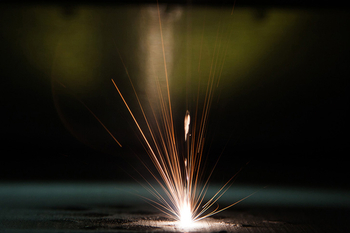Health
Metal Additive Manufacturing Poised to Transform Industry

Metal Additive Manufacturing (AM) is gaining momentum as a transformative technology capable of producing metal structures with intricate shapes and distinctive mechanical properties. This innovative approach to manufacturing not only increases design freedom but also enhances the performance and efficiency of various applications across multiple industries.
Revolutionizing Traditional Manufacturing
Traditionally, manufacturing processes such as casting and machining have imposed limitations on the complexity of designs and material properties. With the advent of metal AM, engineers are now able to create components that were previously deemed impossible. This evolution allows for the production of lighter, stronger parts that can withstand extreme conditions, offering significant advantages in sectors like aerospace and automotive.
For instance, aerospace companies are increasingly adopting metal AM to produce lightweight components that improve fuel efficiency and reduce emissions. According to a report by McKinsey & Company, the aerospace sector could see a reduction in weight by up to 30% through the implementation of this technology.
Applications in Diverse Industries
The potential applications of metal AM extend beyond aerospace. The healthcare industry is also exploring its benefits. Customized implants and prosthetics can be manufactured to fit individual patient needs, ensuring better outcomes. The ability to tailor products precisely for patients exemplifies how metal AM can enhance medical devices.
In the automotive sector, manufacturers are leveraging metal AM to create complex components that improve vehicle performance. For example, parts produced using this technology can reduce assembly time and material waste, leading to cost savings. A study published in the Journal of Manufacturing Science and Engineering noted that automakers could cut production costs by as much as 20% when utilizing metal AM.
Despite these advancements, challenges remain. The technology is still evolving, and concerns about the scalability of metal AM processes continue to be addressed. Moreover, the need for skilled operators and engineers proficient in these advanced techniques is essential for maximizing the technology’s potential.
As the metal AM landscape develops, collaborations between technology providers and industry leaders are becoming increasingly necessary. Partnerships can facilitate knowledge sharing and help in overcoming the existing barriers to widespread adoption.
In summary, metal additive manufacturing stands at the forefront of a manufacturing revolution. Its ability to produce complex geometries and optimize mechanical properties presents opportunities for innovation across multiple sectors, reshaping how products are designed and manufactured. As industries continue to explore the advantages of this technology, its impact is anticipated to grow, marking a significant shift in manufacturing methodologies.
-

 Lifestyle4 months ago
Lifestyle4 months agoLibraries Challenge Rising E-Book Costs Amid Growing Demand
-

 Sports3 months ago
Sports3 months agoTyreek Hill Responds to Tua Tagovailoa’s Comments on Team Dynamics
-

 Sports3 months ago
Sports3 months agoLiverpool Secures Agreement to Sign Young Striker Will Wright
-

 Lifestyle3 months ago
Lifestyle3 months agoSave Your Split Tomatoes: Expert Tips for Gardeners
-

 Lifestyle3 months ago
Lifestyle3 months agoPrincess Beatrice’s Daughter Athena Joins Siblings at London Parade
-

 World3 months ago
World3 months agoWinter Storms Lash New South Wales with Snow, Flood Risks
-

 Science4 months ago
Science4 months agoTrump Administration Moves to Repeal Key Climate Regulation
-

 Science3 months ago
Science3 months agoSan Francisco Hosts Unique Contest to Identify “Performative Males”
-

 Business4 months ago
Business4 months agoSoFi Technologies Shares Slip 2% Following Insider Stock Sale
-

 Science4 months ago
Science4 months agoNew Tool Reveals Link Between Horse Coat Condition and Parasites
-

 Sports4 months ago
Sports4 months agoElon Musk Sculpture Travels From Utah to Yosemite National Park
-

 Science4 months ago
Science4 months agoNew Study Confirms Humans Transported Stonehenge Bluestones









